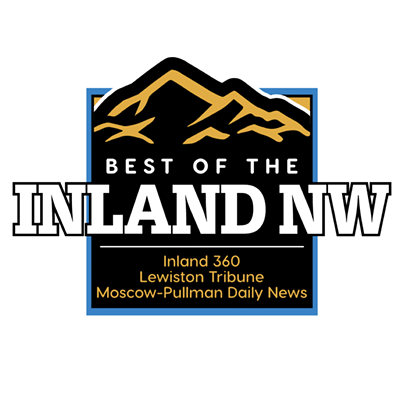Subscribe to our Events Newsletter to get the latest events, straight to your inbox.
This is a past event.
POP Talks
Eight University of Idaho faculty members will display their research and creative work at this second annual event. The free event will take place in the Bruce M. Pitman Center’s International Ballroom and can be viewed online at U of I Live.
Each faculty member takes the stage for a four-minute presentation, exploring the possibilities within their respective fields. The one-hour event takes the audience on a wide-ranging tour that will pose tough questions and provide innovative solutions. At the end of the event, attendees both in person and online can vote for their favorite talk. The top vote-getter will take home a $2,500 grant.
Each UI undergraduate attending in person will have a chance to win one of two $1,000 scholarships.
Speakers for this year’s POP Talks:
Paul Rowley, Ph.D., whose busy lab is exploring how yeast and their hitchhiking viruses, speaks about how they can potentially improve human health.
Sharon Stoll, Ph.D., one of the top researchers on moral education in sport, discusses how we can learn to love exercise.
Erin James, Ph.D., an author of numerous books, speaks about the power of storytelling and how it transforms our thinking.
Randy Teal, Ph.D., head of the U of I Architecture Program, seeks to design buildings that are not only sustainable environmentally but also socially.
Bethaney Fehrenkamp, M.D., Ph.D., a reproductive immunologist, speaks to the effects of sleep, or lack thereof, on nursing babies and their mothers.
Erin Brooks, Ph.D., who is co-leading a $55 million research grant from the U.S. Department of Agriculture, discusses the importance of farmland stewardship and the U of I’s central role.
Mya Pronschinske Groza, Ph.D., associate dean in the College of Business, emphasizes the importance of personal branding in professional and organizational success.
Amin Mirkouei, Ph.D., highlights how Idaho can realize the value of its bounty of its rare earth metals and make mining greener and more efficient.
Each faculty member takes the stage for a four-minute presentation, exploring the possibilities within their respective fields. The one-hour event takes the audience on a wide-ranging tour that will pose tough questions and provide innovative solutions. At the end of the event, attendees both in person and online can vote for their favorite talk. The top vote-getter will take home a $2,500 grant.
Each UI undergraduate attending in person will have a chance to win one of two $1,000 scholarships.
Speakers for this year’s POP Talks:
Paul Rowley, Ph.D., whose busy lab is exploring how yeast and their hitchhiking viruses, speaks about how they can potentially improve human health.
Sharon Stoll, Ph.D., one of the top researchers on moral education in sport, discusses how we can learn to love exercise.
Erin James, Ph.D., an author of numerous books, speaks about the power of storytelling and how it transforms our thinking.
Randy Teal, Ph.D., head of the U of I Architecture Program, seeks to design buildings that are not only sustainable environmentally but also socially.
Bethaney Fehrenkamp, M.D., Ph.D., a reproductive immunologist, speaks to the effects of sleep, or lack thereof, on nursing babies and their mothers.
Erin Brooks, Ph.D., who is co-leading a $55 million research grant from the U.S. Department of Agriculture, discusses the importance of farmland stewardship and the U of I’s central role.
Mya Pronschinske Groza, Ph.D., associate dean in the College of Business, emphasizes the importance of personal branding in professional and organizational success.
Amin Mirkouei, Ph.D., highlights how Idaho can realize the value of its bounty of its rare earth metals and make mining greener and more efficient.
Nearby
-
Pitman Center International Ballroom
0.00 miles
-
University of Idaho Borah Theater
0.00 miles
-
Bruce M. Pitman Center Vandal Ballroom
0.00 miles
-
0.12 miles
-
0.13 miles
-
0.18 miles


















